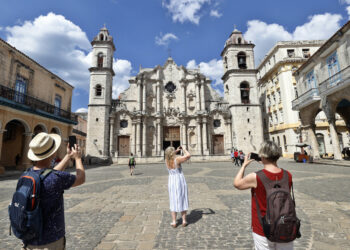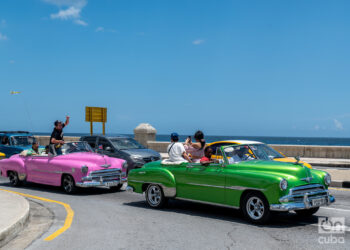Is there anything above politics, ideologies, or religious altars? The answer may be as, if not more, disconcerting than the question.
“Yes,” Juan Dávila replies simply: “Meditation.”
His words barely echo in the long hallway of a 19th-century Vedado mansion, which belonged to none other than Russian Nikolai Yavorsky, Alicia Alonso’s first ballet teacher.
“Here she took her first lessons,” Dávila recalls, pointing to the art nouveau partitions and coffered ceiling of the house that has weathered a thousand storms.
Since 2018, the place has housed the headquarters of Om Cultura y Vida, a non-governmental organization that could transition toward a Local Development Project (LDP) but is still waiting to be admitted to the Ministry of Justice’s Registry of Associations.
“We are on that path and will finally become an organization with associate membership,” he predicts with unfeigned optimism.
The 13th edition of the International Meditation Meeting is scheduled for April 10-13 in Havana, an initiative built by Dávila, president of the organizing committee, in the manner of an inverted pyramid. When almost everything seemed to fail, he knew how to be a visionary, laying the foundational brick on the shifting sands of reality.
For this social activist, with a calm demeanor and a fragile, persuasive tone of voice that obeys the pauses dictated by reflection, the point is to defend “the spiritual dimension of the practice of meditation, beyond,” he insists, “the beliefs or framework of beliefs that any of us who attend may have.”
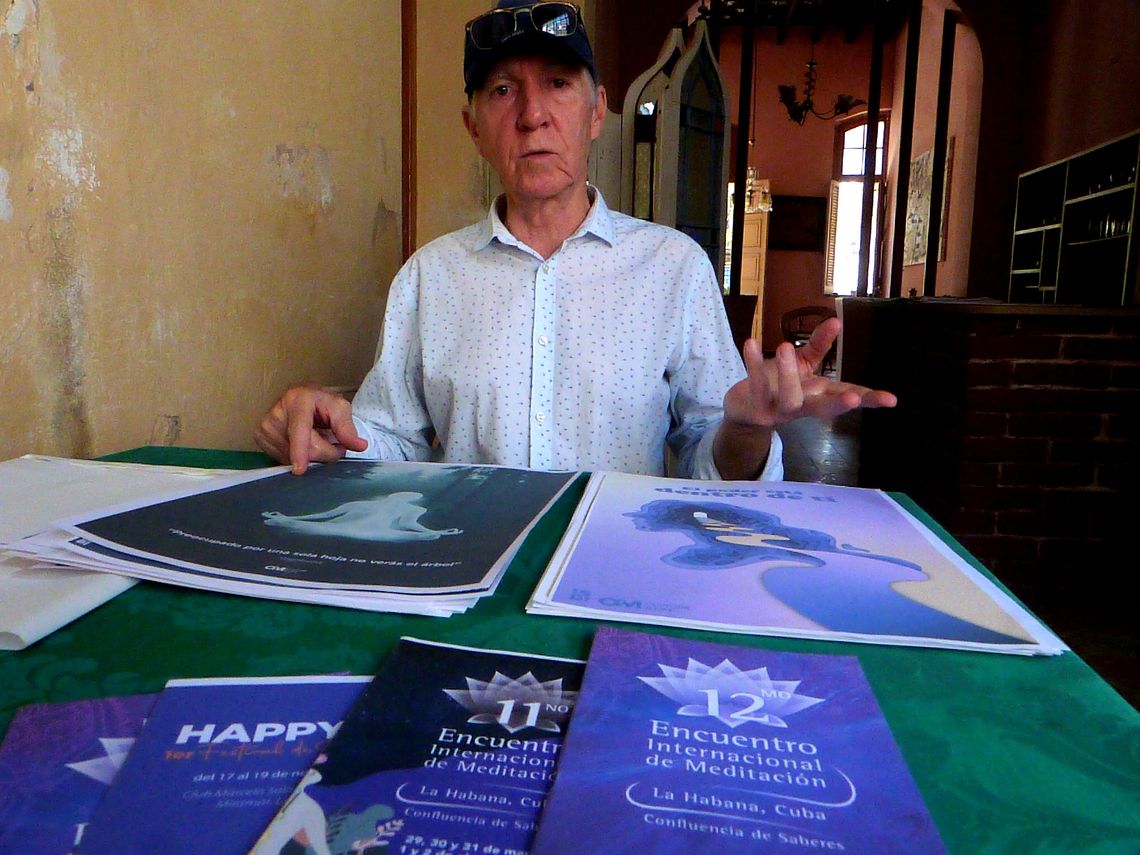
Someone with a vocation for service
With all due respect to ancestral occupations, I don’t have a guru before me. Nor a shaman, an Awo, or a mystic. There is no sign in him that distances him from conventional 21st-century worldliness. Nor a pose. Perhaps I should admit that he could be a good samaritan?
Without biblical frills, Dávila Sánchez (Las Villas, 1957) is a man with a vocation for service. Period. This is the definition that the last born, by Caesarean section, of a brood of 15 siblings and grandson of a patriarchal landowner, against whom he rebelled as a teenager, refusing to accept his imposed model of family governance (his three daughters were spinsters), agrees with.
“The vision that led me to create Om was precisely that vision of service, because if human life were only for oneself and not for serving others, what would be the point?”
Based on that principle, fifteen years ago, Dávila decided to become a spiritual entrepreneur, if that isn’t an oxymoron. His life project was to extend to the community his personal experiences on meditation and its benefits for health and personal growth, already validated by several scientific subjects.
But fifteen years ago, Cuba was a less tolerant and more entrenched society than it may be today and, as a result, Dávila faced opposition, disdain, and resentment from the bureaucratic reactions. Even in circles where orthodoxy should have been struggling. “I’m talking about 2008 and 2009. There was a lot of resistance in the country’s institutions, both scientific, cultural, and academic,” he recalls.
Leal, another enlightened figure
There were sensibilities that understood the importance and necessity of a project like Om. Of all of them, Dr. Eusebio Leal (1942-2020), then the Havana historian and one of the most influential figures in national life, stands out.
“It was Leal who opened the first small door to addressing a community initiative where we could bring the practice of meditation closer to human well-being and health in general. We started a project we called the Meditation Home for Health and Creation, and from there a program emerged, which later became a project and then, in 2013, an association.”
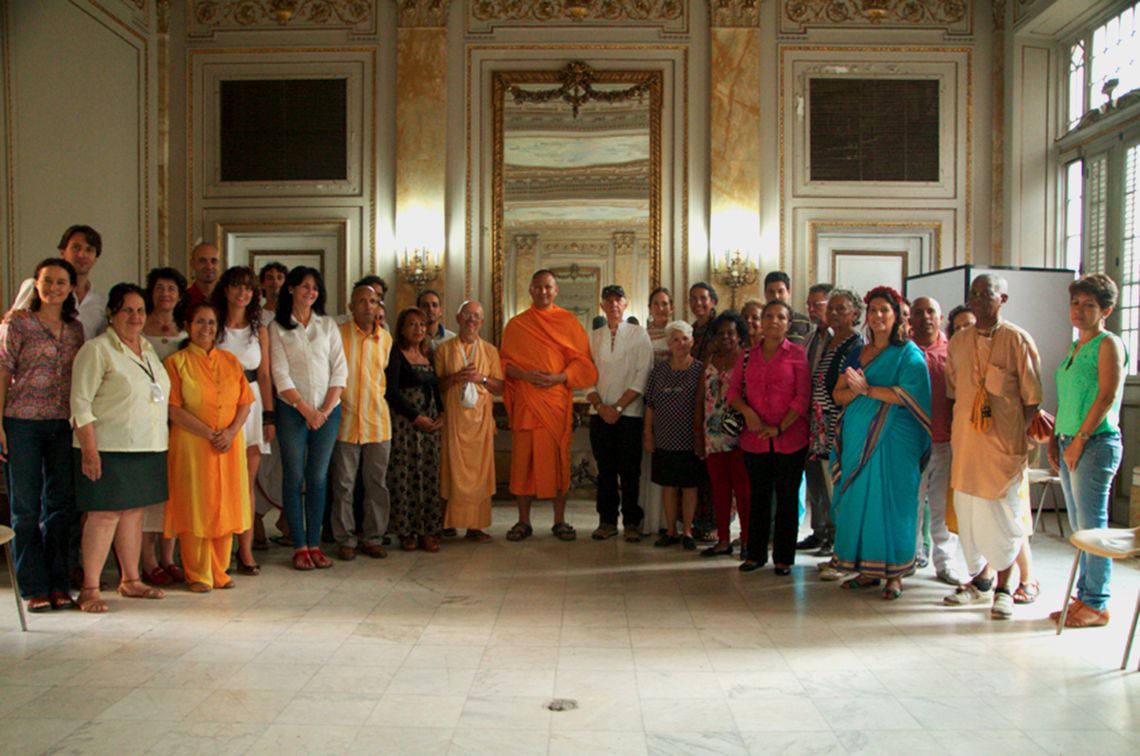
A scientifically supported organization
In 2014, already with a tribe of followers, Dávila felt supported by the social scale of his endeavor and knocked on the doors of scientific institutions.
“We approached the Society of Neurosciences and the Center for Neurosciences and made a proposal to measure the brain’s response to the practice of meditation and conscious breathing. The study established the impact both have on brain structure and the benefits they provide for human beings.”
Beyond any academic misgivings, the lack of more in-depth studies is primarily due to the lack of state-of-the-art equipment, says Dávila, who emphasizes that such research would be unthinkable without the evidence of mental well-being previously provided by Om Meditación.
In this sense, Víctor Nuñez’s 2019 documentary, Om, Meditación en La Habana, corroborates this assertion by recording the concurring testimony of Dr. Nibaldo Hernández Mesa, president of the Cuban Society of Neurosciences (SONECUB).
“Our project managed to unify an important field of research practice with science, and, as we said from the beginning, it is a scientifically supported organization,” asserts Dávila. In fact, in addition to the aforementioned neuroscientific organizations, Om Meditación maintains close ties with the Cuban Center for Psychological and Sociological Research (CIPS) and five universities on the island.
Since the pandemic, the President of the Cuban Academy of Sciences, Dr. Luis Velázquez, and the Deputy Director of the Cuban Center for Neurosciences, Dr. Pedro Antonio Valdés-Sosa, have joined the Om Meetings.
In addition, Om teaches an elective course on Meditation and Creativity at the Higher Institute of Design (ISDi) — which, following its partial collapse, was relocated to the Vedado mansion — and invites its students to create posters alluding to meditation and its psychological benefits for each of the organization’s international meetings.
For Dávila, it’s all about connecting the times: “That is, science is present, investigating what is not established science today, but what the Vedas already spoke of 3,000 years ago and what was known in the original cultures of India, through the Upanishads and the sutras of Patanjali. It’s an ancient literature that science is studying and able to explain.”
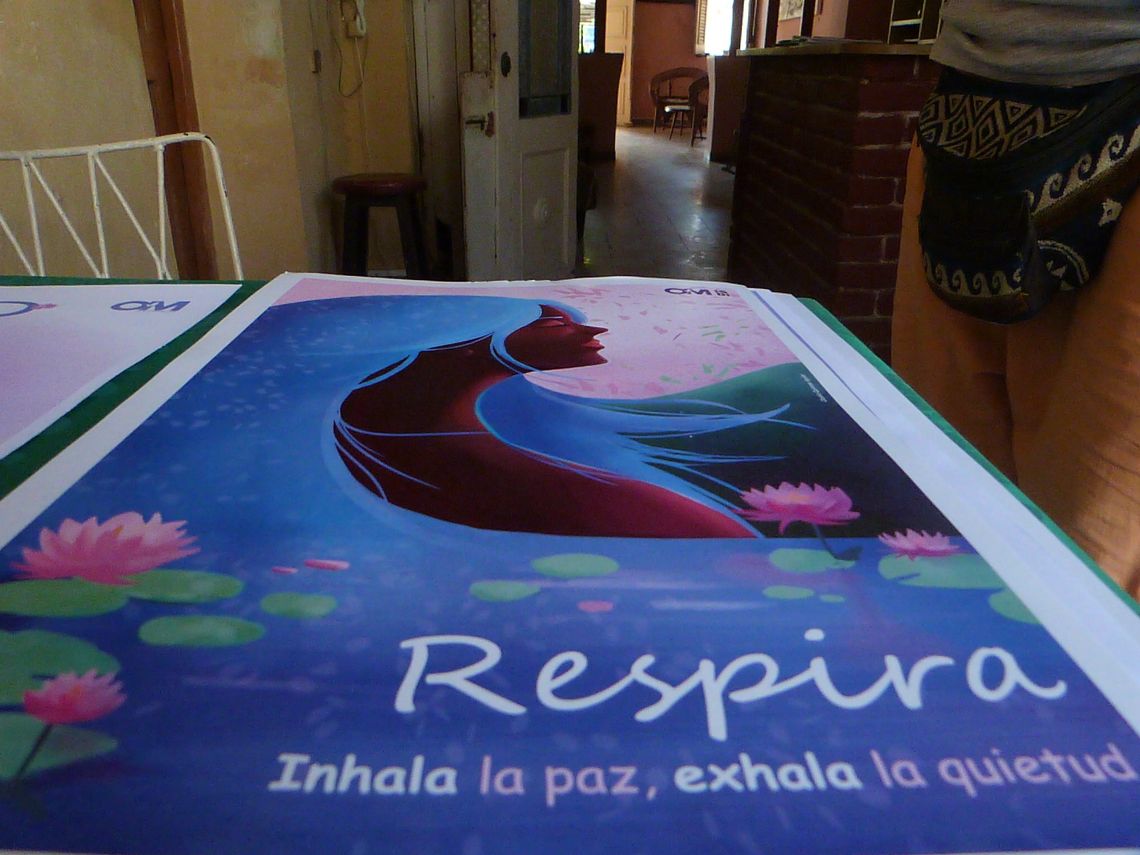
Open mind
Om Meditación doesn’t ask questions or fill out forms. It’s an organization of addition, not subtraction, open horizontally to all interested parties and all schools of thought, without discrimination.
Starting with the leader himself: “I’m always open to experience. I don’t have a preconception of things. I always try to be present in the now and not have expectations,” he responds to the question about the pre-programmed responses our brain gives to the unknown.
If instead of shaking hands, I had joined them for a namaste (a Sanskrit term meaning “I bow to you”) greeting, would that have changed your perception of the newcomer?
In my case, no.
Is suspicion forbidden to enter Om?
Yes. Absolutely.
And doesn’t it just slip through the window?
Look, all human beings have a frame of reference for beliefs derived from culture, family, and pedagogy, and those beliefs can be limiting. But meditation is beyond religion. It’s even beyond ideology. It’s beyond any framework of belief or dogma that a human being may have. Therefore, anyone can be in our organization.
In fact, there are people of all religious and non-religious denominations. From a housewife, a scientist, an artist, people from diverse militancy, and there is a variety of audiences precisely because of this ecumenical vision of converging in the dimension of spirituality.
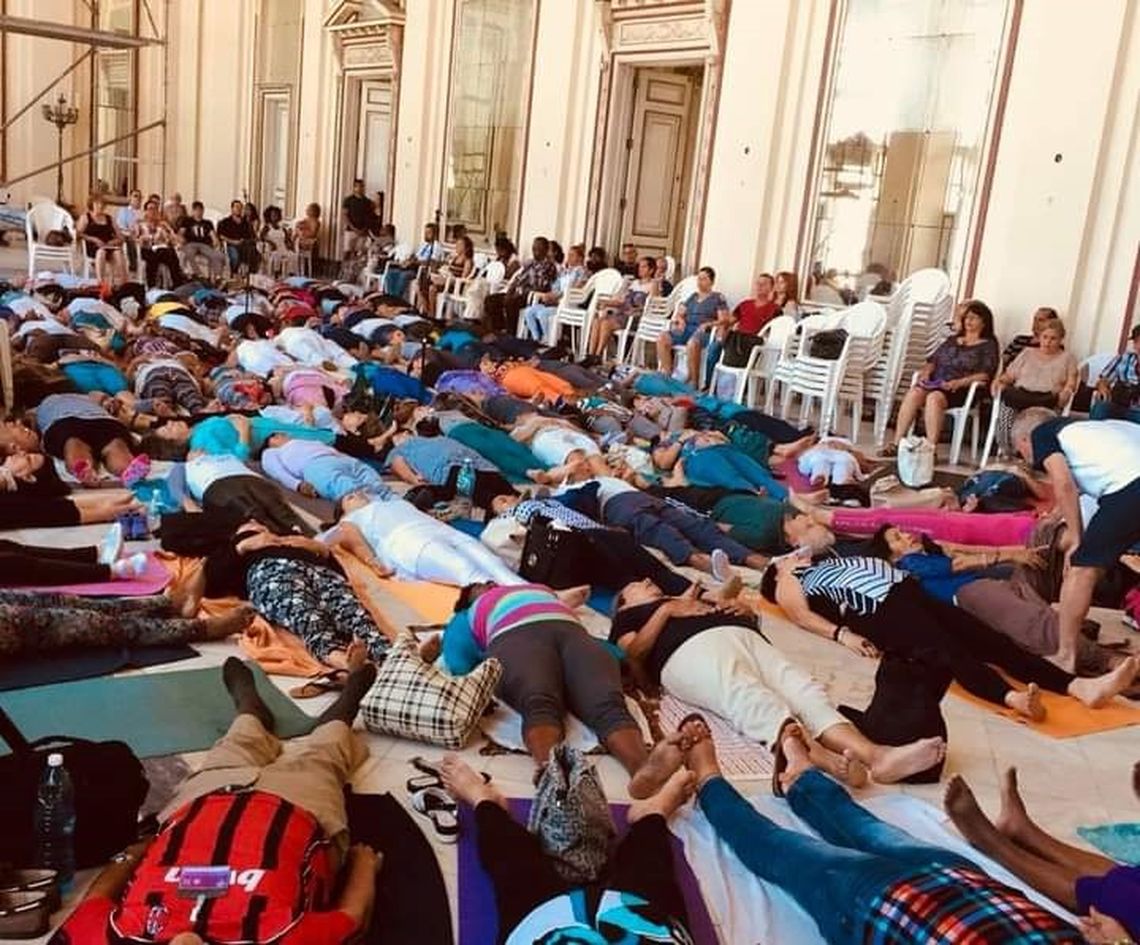
Women
Sociologically speaking, which people or social groups are most suited to these practices from the perspective of ethnicity, income, gender, class, or geographic origin? Is there some sort of predominance of some groups over others, or is it a miscellany without any discernible tendencies?
It’s a miscellany, especially in the capital, because we also have a presence in other provinces. From the beginning, we also approached the CIPS with the interest you mentioned, right? To be able to study what was happening with the practice of meditation, because the number of people who came was impressive. I don’t know if you remember that in the Historic Center, around 1,500 people gathered for one day at one of our meditation events.
And in that diverse audience, the professional public has predominated. Doctors, engineers, and also, I repeat, housewives. In any case, there are always more women than men. I could tell you that around 80% are women.
To what do you attribute such overrepresentation?
Women are much more open to new things, to curiosity, and are much more determined and proactive than men. It’s harder for men to open their hearts and embrace their intimacy, and I think it’s due to an upbringing dominated by a patriarchal culture.
On the other hand, women, in their role as givers and protectors of life, of the family, bear the domestic burden and in many cases give up their personal development to protect their offspring. But when that family is consolidated, or has become independent and disintegrates into other environments, they undergo a kind of introspection exercise, and you find women in their 50s and 60s who suddenly discover themselves as children on this spiritual path.
Are there minors in Om?
Yes, always from age 7. There are also some in yoga practice, who can be younger.
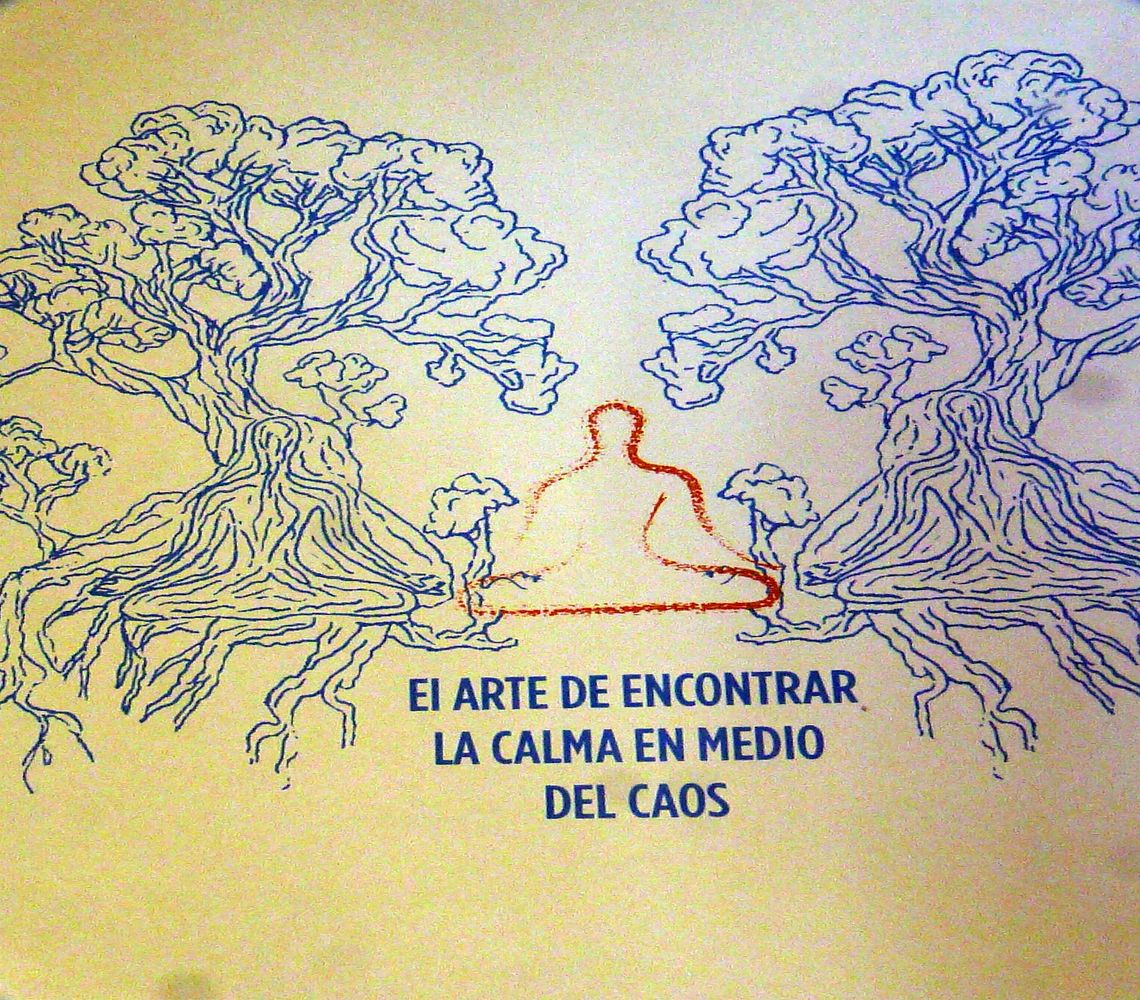
Plain ecumenism
The story is long and complicated. The first school of meditation in ancient times is found in the Hindu tradition, specifically in the Vedas, the oldest sacred texts of India. Dating back to the 2nd millennium BC, these texts, which include the Rigveda, the Samaveda, the Yajurveda, and the Atharvaveda, contain the first written mentions of meditative practices.
This Hindu practice includes what is known as Transcendental Meditation, based on the repetition of personal mantras and popularized in the West in the 1960s.
There is also mantra meditation, which focuses on the repetition of sacred sounds, such as “Om.”
Other schools include Buddhism, with its triangle of currents comprised of Theravada, predominant in South and Southeast Asia, focusing on Vipassana (introspection) and Samatha (tranquility) meditation; Mahayana, which includes practices such as Zen meditation (Zazen) and Pure Land, widespread in East Asia; and Vajrayana, practiced in Tibetan Buddhism, which uses techniques such as visualization of deities and mantras.
The map of meditative schools also includes Zen, originating in Japanese Buddhism; the Chakra system, focused on the seven energy centers of the body; and the Metta (Loving-Kindness) school, originating in Tibetan Buddhism.
Also recorded are Kundalini, which seeks to awaken the energy at the base of the spine; Vipassana, which emphasizes breath observation and awareness of the present moment; and the so-called New Movements that appropriate practices such as Shambhala Buddhism, the New Kadampa Tradition, and Secular Buddhism, adapting traditional techniques to modern contexts.
Within these contemporary currents, one of the most practiced is mindfulness (“full attention or awareness without judgment”), developed in the late 1970s by U.S. molecular biologist Jon Kabat-Zinn. It is not a traditional school of meditation, but a secularized practice based on mindfulness techniques rooted in Buddhism, especially Vipassana meditation.
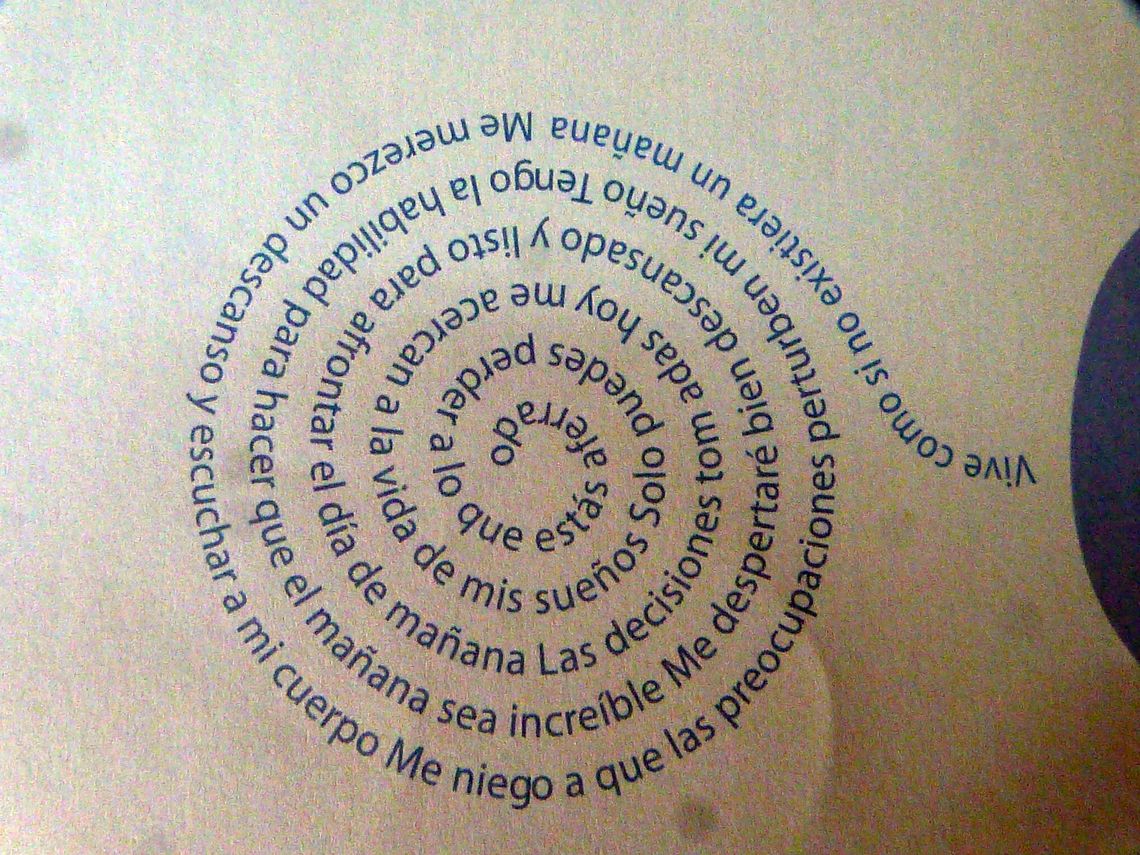
I suppose that in the face of this tsunami of diversity, there is no choice but to be ecumenical. Now, do you have a methodological compass to help you navigate this universal heritage?
Yes, I have experience in different meditation paths and have even trained in different meditation paths. I’d like to talk more about the organization’s experience than my own; I’d like to talk more about the message than the messenger.
Does Om embrace a specific school?
No. In my case, I’ve had several experiences and maintain a rigorous practice, but in the organization we welcome all the paths of meditation. We don’t mix them, but we welcome them. And we do practices that are inherent or may be of interest to all schools and all spiritual paths. Sometimes, a path we didn’t have before, a practice, a school, even comes along, and we always explore and open ourselves to the experience. We are unique, unrepeatable human beings, and what may work for me may not work for you. So, in that vision of the uniqueness of the human being, we open ourselves to the point of confluence: the biocentrism of life.
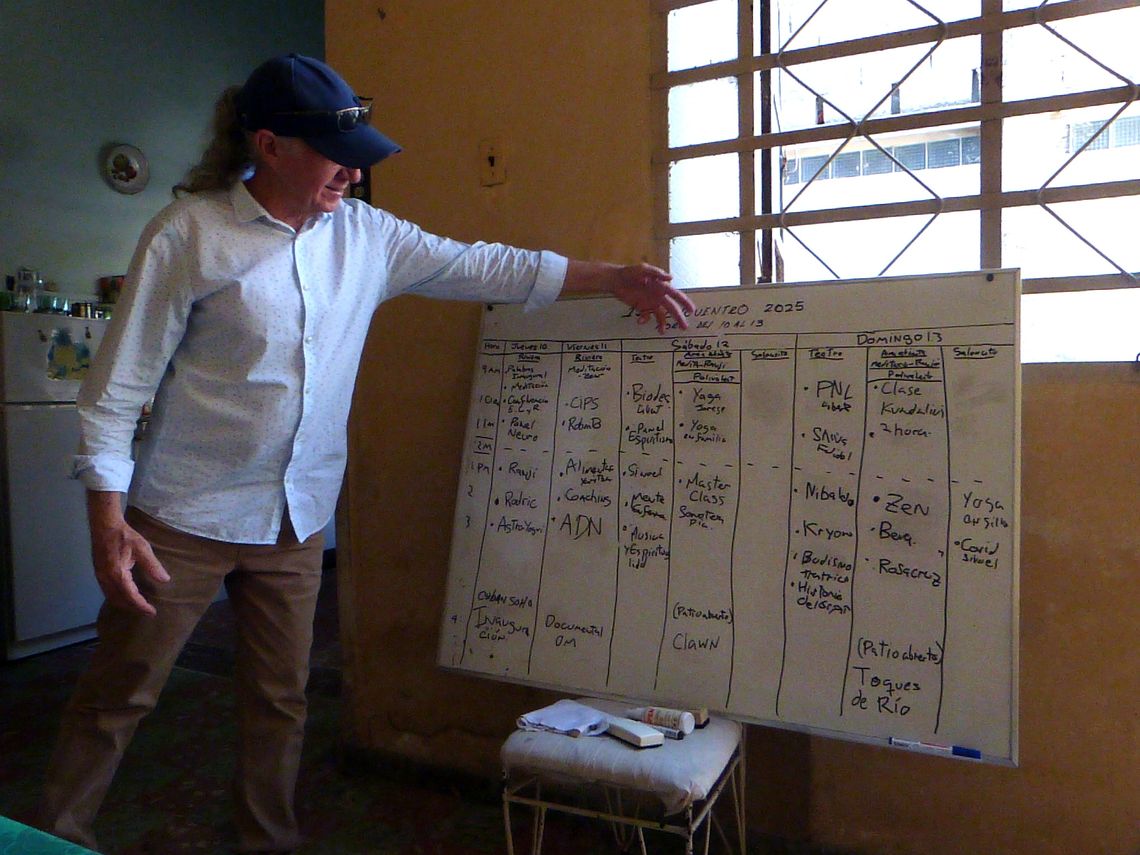
Om 13 novelties
“The first of the new features of the 2025 meeting is that it will be held amidst the current circumstances in Cuba,” says Dávila, citing the shortages of fuel, electricity, and city transportation, which will surely impact attendance at the event sessions.
“We have managed to create a first-class program of excellence where science, religions, and spirituality converge,” he emphasizes.
“Confluence of knowledge: Spirituality, Science, and Religion; Sound Therapy and Sound Harmonization with Tibetan Singing Bowls and Gong”; “Ancestral Memories from Biodecoding”; “From Quantum Mechanics: Paradigm Shifts, Healing, and Impact on DNA”; and “Meditation, Yoga, and Breathing Practices” are some of the event’s thematic axes.
For his part, the president of the Cuban Academy of Sciences, Dr. Luis Velázquez, will speak on “21st Century Global Challenges. Meditation as a Tool for Resilience and Collective Well-being.” Dr. Roberto Rodríguez will present a paper on “Neurobiological Basis of Meditation: From Neuroplasticity to Creativity.” Dr. Nibaldo Hernández will also offer a presentation on “Formal and Informal Meditation from the Perspective of Neuroscience.”
The Spanish Institute of Sound Therapy will also be featured on the program, led by its president and founder, Ramji Singh, who is also a Life Coach and Kundalini Yoga Master.
Master Ramji will lead meditations, lectures, a lecture on Healing Sound, Sound Harmonization, and Kundalini Yoga classes, Dávila announced.

Meditation: a tool for coping, not for escape
Concentration involves the suppression of ordinary mental functioning, restricting attention to a single point and inducing states of observation characterized by tranquility and delight, states Dr. Pedro Arias, a first-degree specialist in Normal and Pathological Physiology.
In an article published in 1998 in the Revista Cubana de Medicina General Integral journal, this researcher from the Laboratory of Psychosocial Studies of Health (LEPS) of the Center for Psychological and Sociological Research (CIPS) asserts that meditation optimizes “the efficiency of the body’s countless intrinsic self-repairing mechanisms.”
According to the expert, “the subsequent normalization of accumulated physiological imbalances could then help maintain good health and prolong a useful life.”
In times of crisis like these, is meditation a tool for the desperate?
It’s not a lifeline, but it is a tool that helps us manage stress appropriately and channel emotions in difficult times or crises.
Naturally, in the Cuban context, many people come looking for this tool, but our vision goes far beyond the current situation, because meditation fosters profound self-realization, a self-knowledge where we can transcend the limited perception of the senses and appreciate the multidimensionality of life.
Empty fridge syndrome
What value would there be in meditating in front of an empty fridge, like someone waiting for a miracle? And take it as a metaphor for a permanently deprived existence with no signs of remission. Let’s just say there’s no social elevator here that is worthwhile….
I don’t want to make any comparisons, but I always remember that excellent film, La vie est belle. How, in such a difficult time, human beings have the capacity to rise above the most atrocious circumstances. If, during a difficult moment in life, you have the tools to manage your emotions and, consequently, make much more focused and balanced decisions, then meditation will be of great benefit. And those balanced decisions will contribute to a collective unconscious. I’m not talking about a peaceful, resigned acceptance; that’s not what I’m talking about. I’m talking about how we can change reality based on a field of consciousness.
Here we have an expert in food and nutrition, Dr. Yaritza Domínguez Ayón, and in a podcast we have, I interviewed her about these topics. I said to her: “Doctor, it’s a thorny, difficult subject, but let’s start with what’s most pragmatic. In the midst of the crisis and the many difficulties we face, what is the best we can do with the little we have?” She then cited the properties of sweet potatoes in one of her comments, and in the audience participating in the broadcast there was someone who wanted to eat meat. Right? But if you don’t have meat and you have sweet potatoes and can manage better nutrition with sweet potatoes, it’s not like you have to give up meat, but if you don’t have it, suffering won’t solve it.
With mental stillness and inner peace, you can have better health and make the most of what you have and manage an empty fridge better, don’t doubt it. Mental crisis, mental noise, won’t help us manage a better life.
Biodecoding and the Maharishi effect
Biodecoding or Bioneuroemotion is a therapeutic approach that seeks the emotional root of illness. It is based on the idea that unresolved experiences and emotions, especially traumas, manifest in the body as symptoms; that is, they become somatized.
Through family tree analysis, biological conflicts, and symptom interpretation, biodecoding attempts to identify hidden emotions and facilitate healing through awareness and the reprogramming of beliefs.
“We have people who come from other spiritual paths or even religions, who haven’t found answers to their personal struggles, and here they have found the channeling of their ancestral memories through biodecoding,” says Dávila, who during his travels in South America collected shamanic experiences that are very useful in the field of regression.
According to Dávila, biodecoding arrived in Cuba in 2009 thanks to the Spanish psychologist Enrique Olvera, who, with the support of health authorities, established the specialty study at the Calixto García Hospital under the title of Bioemotional Integration.
This method can promote “the resolution of conflicts that a person may have from childhood, even from the mother’s pregnancy, even from the time before the father and mother joined together and the conception of the new being during pregnancy,” says Dávila, who emphasizes, in parallel, the importance of modifying the collective unconscious, discovered by Carl Jung, and the Maharishi effect, as evidence of the thesis of the Swiss psychiatrist, a colleague of Freud’s.
“In the 1990s, the Maharishi effect was measured in the United States, and it demonstrated how a given number of people practicing meditation can change the collective unconscious,” he confirms.
Proposed by the Indian guru Maharishi Mahesh Yogi (1917–2008), this effect suggests that a critical mass of people practicing Transcendental Meditation (TM) can reduce crime and improve the quality of life in a community. It is based on the idea that the coherence generated by TM in a large group extends to the social environment, reducing collective stress and promoting peace.
This study was conducted in 1972 in twenty-four U.S. cities with populations of more than 10,000, with 1% or more of the population practicing the Transcendental Meditation program.
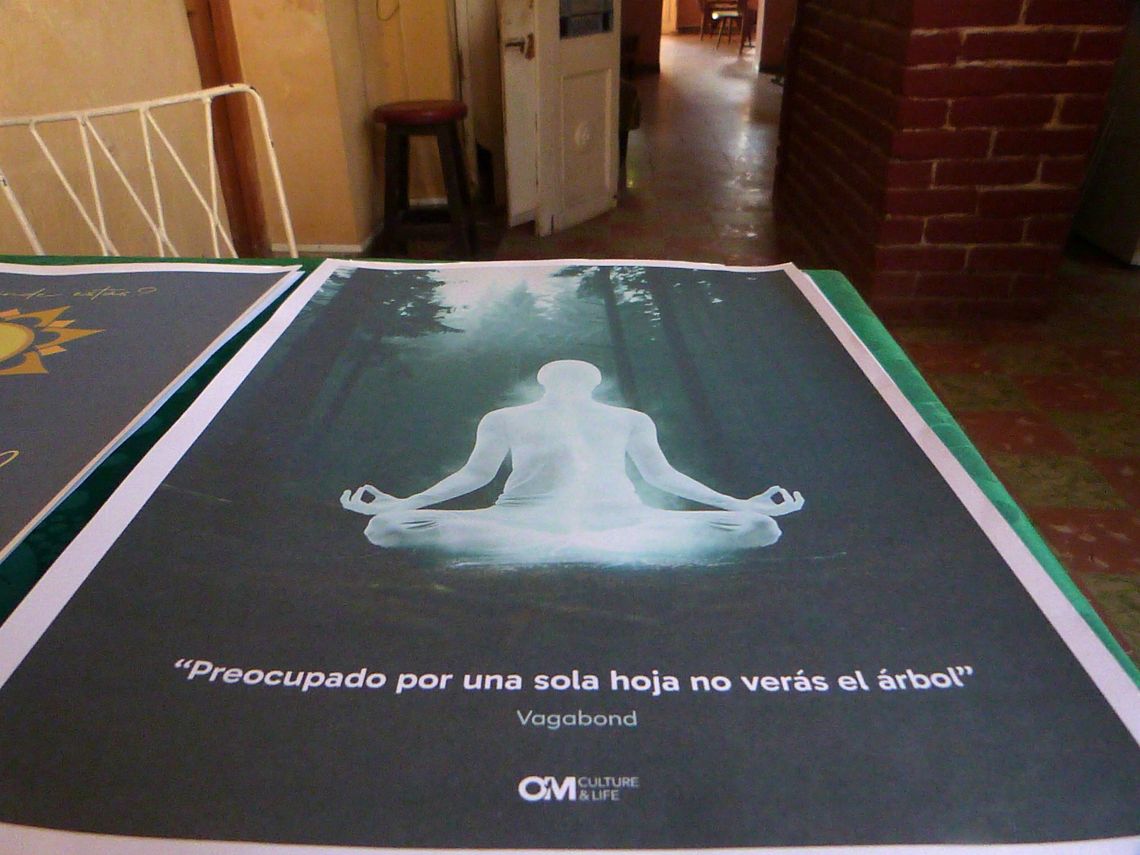
Martí, the most enlightened
For Dávila, José Martí’s inclusive republican project “with all and for the good of all” can be applied to meditation, as it is an exercise in accompaniment for the well-being and dignity of the person without consideration or judgment.
However, the national hero, a thinker of formidable spirituality (“And all Being is reflected in my soul, and searching without faith, I die of faith!”), a master mason since 1871 and confessionally without declared affiliation, has served as a wild card for many projects of any side and purpose.
When asked whether placing Martí’s thought as a touchstone in Om was an alibi for legitimization or an act of justice, the professor leans toward the latter and tells the following anecdote:
“During a difficult time for the organization — I’m talking about 2013-2014, a time I see as the darkest, when some officials didn’t understand and wanted Om Meditación to not exist — I have to say that the Center for Martí Studies and Dr. Armando Hart threw us a lifeline so we could exist within the José Martí Cultural Society, because we already had this vision that Martí is our great enlightened one or, as Lezama defined it, ‘that mystery that accompanies us.’ In 2024, a professor from the Faculty of Philosophy who is with us, Dr. Douglas Calvo, discovered José Martí’s study of Buddhism and The Four Noble Truths of Buddha and brought it to the event, and he’s bringing it back this year. So, in 2009, when we included Martí with that ecumenical vision, and then the path of life proved us right, right?”
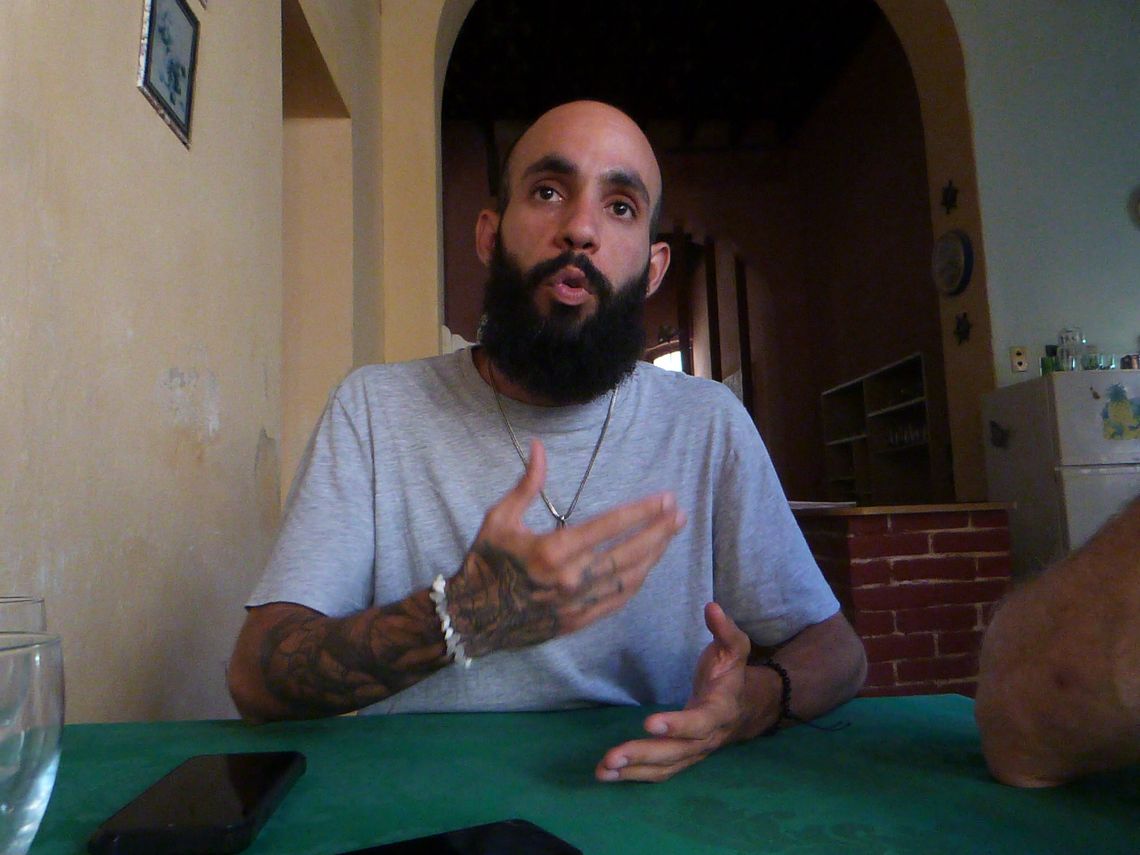
Competition within the religious spectrum?
Do you think OM Meditación could be perceived within the religious spectrum as a competitive entity that is recruiting followers or kidnapping parishioners?
We don’t proselytize. We don’t go around knocking on doors. We opened this space, and it grew very rapidly by its very nature. In fact, since 2014, we held an event in Cienfuegos for the central provinces, and it was as large as the one in Havana.
And I’ll give you a scoop: after we hold the 13th Gathering in Havana, we will return to Cienfuegos and Trinidad to replicate it in those territories.
In response to your question about the competition, we had the clarity to approach all the paths, all the groups operating in the country and invite them to our experience. I’m talking about the Rosicrucian Society, the Theosophical Society, the Freemasons, and also the established religions, both the Council of Churches of Cuba, which has accompanied us for a long time, and the Catholic Church.
And are Afro-Cuban religions present at Om?
Yes, of course. Afro-Cuban religions have also participated in Om events. In fact, Natalia Bolívar herself has also participated. Furthermore, Om’s membership includes many practitioners.
At this event, the CIPS is featuring the topic “Social Significance of the Abakuá Society” on its panel. The CIPS panel is titled “Current Cuban Socio-Religious Panorama,” announces Dávila, himself a survivor of a life-threatening health event (26 doctors had given up hope for him) who was rescued through meditative practices.

Free zone
Can artificial intelligence develop a spirituality that is alien to the human spirituality from which it was created?
I don’t believe it’s possible for humankind to generate an intelligence and spirituality superior to that from which it was created.
Did you have a mentor?
No. When my family went to church, I always knew I wanted to go much further.
What was the last book you read?
A New Earth by Eckhart Tolle.
What was the last movie?
El mundo de Nelsito by Fernando Pérez.
Do you believe in the Apocalypse?
I believe human civilization may disappear from the face of the Earth, but life…no, of course. Life is infinite.
Do you have any clue as to where you stand at this moment?
No, that would be very pretentious of me.
Do you like the cosmic and mystical poetry of Ernesto Cardenal?
I like it.
Have you read Merton?
I haven’t read him.
What do you like most about life?
Living it. Living it, and living it intensely in every moment. I knew I was neither in the future nor in the past, but in the present moment.
What do you believe in?
In the sacredness of life. I believe in the existence of all living beings under the Buddhist approach to life.
Are you against the death penalty?
Absolutely.
Are you anti-abortion?
Not absolutely. Under certain circumstances, you might be for or against abortion. Whenever abortion can be avoided and life respected, that’s my position.
As a child, what was your favorite game?
Horseback riding. It gave me a sense of freedom.
Do you still do it?
Yes, whenever there’s a horse.
Do you believe in the transmigration of souls?
I don’t have the exact answer.
Do you believe that your karma has been polished, healed, and that it will never return?
No, that’s very pretentious too.
Antonio Machado has a fascinating verse about the despotism of time and the finiteness of life: “Today is always still.” Would you agree with the poet?
Yes.
What do you want for Cuba?
I want Cuba to be a nation where we all fit in and embrace each other. I want it to be a country with opportunities and rights for all, and I want us to have national unity beyond our differences.
In your meditations, do you feel that the Aom murmured like a mantra is the sound of the universe, or does something tell you it might be a hoax?
I wasn’t there when it emerged, nor was I at NASA, which investigated it.
Do you like epitaphs? Would you like one for yourself?
I’m not much for epitaphs, because life is a constant state of change.
What’s the only thing that’s certain?
Change. The only thing that’s certain for me in this life is change.









